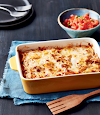Hot Toddy Classic Eggnog
- Eggnog is perhaps the most traditional holiday drink, and it has taken on many variations since its humble beginnings in the Britain of yore. Back then, it was known as “dry sack posset,” a mixture of sherry, eggs, and milk. One theory on the etymology of the wordeggnog is that it comes from the British slang for strong ale: nog. Another theory is that the name stems from the word noggin, which often referred to a small wooden mug. Whatever the case, eggnog and its many variations have become a worldwide tradition. While the liquor may differ, with brandy in England, bourbon in America, and rum in Puerto Rico’s coquito, the main ingredients are the same: a thick batter of eggs, milk, and sugar. Don’t fall for the eggnog sold in supermarkets—it’s a poor imitation of the original.
SERVES 24
24 large eggs
2 cups sugar
1 liter brandy (or bourbon)
1 quart heavy cream
2 quarts whole milk
1 quart good vanilla ice cream, softened
Pinch of salt
Freshly ground nutmeg, for garnish
Separate the eggs into two bowls one for the whites, the other for yolks.
Add the sugar to the yolks, and beat briskly with a wire whisk until thick and lemon-colored, about 3 minutes. Add the brandy and continue whipping as you add the heavy cream, milk, and softened ice cream. Set aside.
Add the pinch of salt to the egg whites and whip until they begin to form soft peaks (about 5 minutes). Be careful not to turn them into stiff, shiny meringue; the key is to get them just fluffy. Gently fold the whites into the batter until evenly combined. Chill the eggnog for about 45 minutes before serving, garnished with a pinch of nutmeg.
USING RAW EGGS
SOME HOSTS are reluctant to serve raw eggs. Although the food-safety folks at the USDA recommend against using “recipes in which the raw-egg ingredients are not cooked” especially when serving pregnant women, young children, or anyone with a weakened immune system, there is no way around using eggs if you’re going to prepare a genuine eggnog.
The Food Safety and Inspection Service offers these guidelines:
• Select only clean, intact, and well-refrigerated Grade A or Grade AA eggs. Eggs left at room temperature promote bacterial growth more quickly, so be sure to store eggs in your refrigerator as soon as possible, and keep them refrigerated at 45°F. or lower. Don’t store eggs in the refrigerator door, since it’s often the warmest part of the refrigerator.
• Use eggs within three to five weeks. Never store raw eggs out of the shell in the refrigerator. Also avoid having eggs outside of the refrigerator for more than two hours.
• As with poultry, be sure to wash countertops and utensils that come into contact with raw eggs immediately, as well as your hands.
If you follow these general guidelines, you should have a safe and salmonella-free holiday. But if you are really worried, there are many varieties of pasteurized imitation eggnog products on the market during the holiday season that you can serve, doctored up with a little nutmeg.
- A hot toddy, also known as hot whiskey in Ireland, is typically a mixed drink made of liquor and water with honey (or, in some recipes, sugar), herbs (such as tea) and spices, and served hot. Hot toddy recipes vary and are traditionally drunk before retiring for the night, or in wet or cold weather. Some believe the drink relieves the symptoms of the cold and flu in How to Drink, Victoria Moore describes the drink as "the vitamin C for health, the honey to soothe, the alcohol to numb.





0 Comments